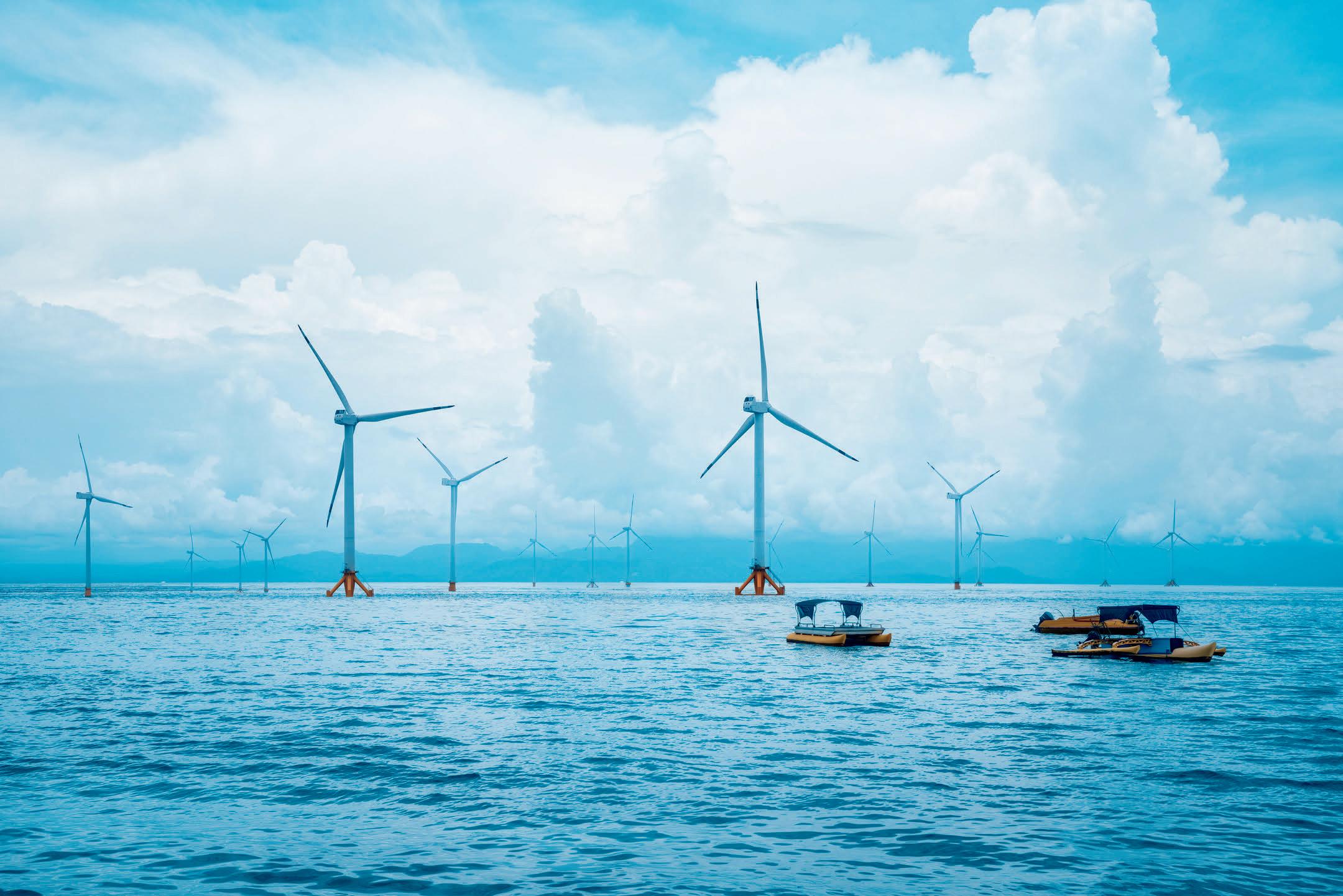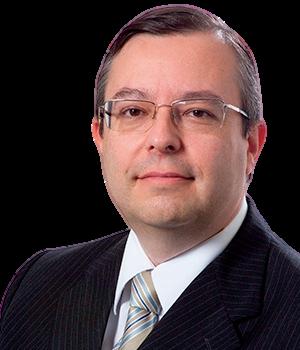
9 minute read
Sustainable Infrastructure: Building the Future - Danilo Dias, Chief Revenue Officer and Board Advisor.
Danilo Dias, Chief Revenue Officer, and Board Advisor
Building the Future
Advertisement
Sustainable infrastructure is essential for economic, environmental, and social outcomes and involves a strategic and holistic approach to developing long-term, quality infrastructure that can meet crucial needs.
Examples include roads, bridges, and hydroelectric power stations. It creates better conditions for citizens and offers enhanced economic opportunities, so it's critical to prioritize longevity and sustainability from design through construction. A horizontal project with crosscutting best practices can help ensure sustainable infrastructure becomes widespread.
Crosscutting best practices for sustainable infrastructure involve:
a. taking a life-cycle approach,
b. considering environmental and social impacts, and
c. incorporating new technologies and innovations.
This can be achieved through collaborations between various stakeholders, such as the government, private sector, and civil society, to develop and implement sustainable infrastructure projects.
A few fundamental principles to ensure sustainable infrastructure are using renewable energy sources, reducing waste and greenhouse gas emissions, conserving natural resources, and considering the needs and preferences of local communities.
Additionally, effective monitoring and evaluation mechanisms need to be in place to ensure that infrastructure is operating effectively and efficiently over its lifespan.
By prioritizing sustainable infrastructure, we can create a better future for everyone and pave the way for a more sustainable and equitable world.
a. Low-carbon transition: The infrastructure sector needs to consider the increasing demand for low-carbon and energy-efficient solutions.
This can be achieved through the development of renewable energy sources, innovative grid systems, and energy-efficient buildings. The adoption of sustainable transport systems such as cycling, public transport, and electric vehicles will also contribute to the low-carbon transition.
b. Resilience and adaptation: Sustainable infrastructure must be resilient to natural disasters, such as earthquakes, hurricanes, and floods. It must also be designed to adapt to changing climate conditions, such as rising sea levels and changing weather patterns. This requires a comprehensive approach that considers the complete life cycle of infrastructure projects, including the design, construction, operation, and maintenance phases.
c. Reduce regional disparities: Sustainable infrastructure must be accessible to all, regardless of geographic location or socio-economic status. The development of sustainable infrastructure must take into account the needs of rural and remote areas, where access to essential services is often limited. This can be achieved through the development of local infrastructure projects that support local economies and provide access to critical services.
The development of sustainable infrastructure requires a strategic and holistic approach that considers economic, environmental, social, and growth objectives. It must be accessible to all, regardless of geographic location or socio-economic status, and must be resilient to natural disasters and changing climate conditions.
The infrastructure sector must embrace sustainable principles to ensure that essential services are delivered to meet the needs of society and the economy.
Investing in sustainable infrastructure is critical for achieving sustainable development goals, including reducing poverty, improving access to education and healthcare, and combating climate change.
Sustainable infrastructure can also help stimulate economic growth and create jobs, especially in economic growth and create jobs, especially in low-income communities.
Governments can provide policy and regulatory frameworks that incentivize sustainable infrastructure, while multilateral organizations can provide financing and technical assistance to support the development of sustainable infrastructure projects.
Private sector investors can also play a key role in financing and implementing sustainable infrastructure projects while benefiting from the economic opportunities they provide.
Sustainable infrastructure is crucial for achieving economic, environmental, and social outcomes and should be a priority in any development agenda. By adopting crosscutting best practices and collaborating across sectors, we can create a more sustainable future for all.
There are many examples of sustainable infrastructure projects from around the world. Here are a few:

The Three Gorges Dam in China: This is the world's largest hydroelectric power station and was built to provide renewable energy and help control flooding along the Yangtze River.
The High Line in New York City: This is an elevated park built on a former railway line, which is now a popular tourist attraction and public space, providing access to green space and recreational opportunities in a dense urban area.
The London Array offshore wind farm: This is one of the largest offshore wind farms in the world, located in the Thames Estuary. It provides renewable energy to over 500,000 homes in the UK and reduces carbon emissions.
The Indira Gandhi International Airport in Delhi, India: This airport has implemented various sustainable features, such as solar power generation, rainwater harvesting, and waste management systems, reducing its carbon footprint and energy consumption.
The Masdar City project in Abu Dhabi: This is a sustainable urban development project that aims to be a carbon-neutral city, using renewable energy sources and sustainable technologies in its design and construction.
These projects demonstrate that sustainable infrastructure can be achieved in a variety of contexts, from large-scale infrastructure to urban development projects.
Some professions are likely to be impacted: Some professions are likely to be impacted: Engineers: Engineers:
Engineers will play a critical role in designing Engineers will play a critical role in designing and constructing sustainable infrastructure, and constructing sustainable infrastructure, such as renewable energy projects, green such renewable energy projects, green buildings, and transportation systems.
Architects: Architects must consider Architects: Architects must consider sustainability in their designs, incorporating sustainability in their designs, incorporating passive solar heating and cooling, green roofs, passive solar heating and cooling, green roofs, and energy-efficient building materials.
Urban planners: Urban planners must Urban planners: Urban planners must prioritize sustainable infrastructure, such as prioritize sustainable infrastructure, such as designing walkable communities, promoting designing walkable communities, promoting public transportation, creating green public transportation, and creating green spaces.
Environmental scientists: Environmental Environmental scientists: Environmental scientists will play a key role in assessing the scientists will play a key role in assessing the environmental impacts of infrastructure environmental impacts of infrastructure projects, identifying potential risks, and projects, identifying potential risks, and proposing mitigation measures. proposing mitigation measures.
Project managers: Project managers will need Project managers: Project will need to have a solid understanding of sustainable to have a solid understanding of sustainable infrastructure and be able to implement infrastructure and be able to implement sustainability goals and practices throughout sustainability goals and practices throughout the project lifecycle. the project lifecycle.
Energy analysts: Energy analysts will be Energy analysts: Energy analysts will be needed to assess energy demand, analyze needed to assess energy demand, analyze energy efficiency measures, and help develop energy efficiency measures, and help develop renewable energy projects. renewable projects.
Construction workers: Construction workers Construction workers: Construction workers will need to be trained in sustainable will need to be trained in sustainable construction practices, such as using recycled construction practices, such as using recycled materials and minimizing waste. materials and minimizing waste.
To thrive in the field of sustainable infrastructure, To thrive in the field of sustainable infrastructure, new executives will need to possess a set of skills new executives will need to possess a set of skills and competencies that go beyond traditional and competencies that go beyond traditional business skills.
Here are some of the skills that are particularly important for executives in sustainable infrastructure:
Understanding of sustainability principles: Executives need to have a solid understanding of sustainability principles and their applications to infrastructure development. This includes knowledge of renewable energy technologies, green building practices, and sustainable transportation solutions.
Strategic thinking: Executives need to be able to think strategically and develop long-term plans that prioritize sustainability. This requires the ability to identify opportunities for sustainable infrastructure development and to navigate the complex political, social, and economic landscape in which infrastructure projects operate.
Collaboration and stakeholder engagement: Sustainable infrastructure projects often require collaboration across different sectors and stakeholders. Executives need to be skilled at building and maintaining relationships with a wide range of stakeholders, including government agencies, private sector investors, and local communities.
Technical knowledge: Executives need to have a strong technical knowledge of the infrastructure sector, including engineering, construction, and project management. They also need to be up-to-date on emerging technologies and best practices in sustainable infrastructure development.
Communication skills: Executives need to be effective communicators who can articulate the value of sustainable infrastructure to a variety of audiences, including investors, policymakers, and the public. This includes the ability to develop and deliver compelling presentations, reports, and other communication materials.
Resilience: Sustainable infrastructure projects often face challenges and obstacles, such as changing political priorities, shifting funding sources, or community opposition. Executives need to be resilient and able to adapt to changing circumstances and find creative solutions to overcome these challenges.

Danilo Dias
Global Chief Revenue Officer and Board Advisor at Hayman-Woodward
.Danilo Dias is a Global Chief Revenue Officer and Board Advisor at Hayman-Woodward. He is a highly accomplished and well-rounded professional with extensive experience in the business world. With a background in C-level executive positions, he served as various companies' chief executive officer. A sought-after author, speaker, and mentor, member of the Digital Marketing Program Advisory Council of George Washington University, based in Washington, D.C. He also serves on several other Boarders, including Instituto BESC de Humanidades e Economia and the Infrastructure and Logistic Efficiency Brazilian Board. Throughout his career, he has worked in diverse sectors, including Brewery, Oil & Gas, Telecommunications, Defense, and Security, only to name a few. All this experience made him our Infrastructure columnist.










